Paint for concrete for outdoor use: features of choice and application
For painting facades made of concrete, a special paint is used. It is its individual composition that ensures high adhesion between the paint and the painted surface and long-term operation of the painted coating. We will talk further about how to choose high-quality concrete paint for working outside the building.
Concrete paint - features and benefits
The use of paint on concrete allows not only to improve the aesthetic appeal of the coating, but also improves the duration of its operation. The paint is able to hide minor defects and surface irregularities. The use of concrete as an exterior wall finish has many advantages, namely:
- high level of strength;
- resistance to mechanical stress;
- resistance to corrosion;
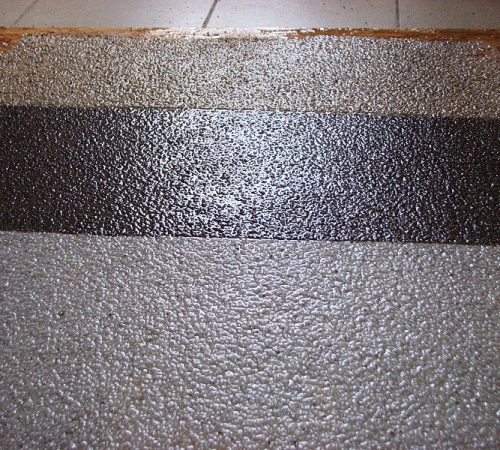
- resistance to ultraviolet radiation;
- frost, wind resistance;
- good vapor permeability and moisture resistance.
However, the appearance of the concrete surface leaves much to be desired, therefore, in order for the facade to become presentable and attractive, it is recommended to paint it.
Concrete paint is able to provide reliable protection of the base from biological irritants and moisture. The process of choosing paint for concrete is quite complicated, since too high requirements are imposed on this material.
The paint that is applied to the concrete base, which is located outside the room, must have the following properties:
- moisture resistance - the first and most important requirement for paint is to prevent moisture from entering the interior of the room;
- fire safety and resistance to ignition - the paint should not ignite when the slightest sparks appear, in addition, it should not spread fire;
- high level of adhesion with a concrete base - this property helps to improve adhesion between the paint and the surface, the higher the adhesion, the longer the paint stays on the base, if the adhesion level is low, the paint peels off and peels off;
- high resistance to light - if the paint is well resistant to ultraviolet radiation, then it does not fade over time and does not lose color;
- resistance to temperature extremes - this property is explained by the fact that the surface to be painted is outdoors, which means it is subject to a sharp change in weather conditions, if the paint is unstable before frost or heat, then its properties deteriorate, and the coating loses its attractiveness, concrete paint must have properties keeping the temperature in the range from -40 to + 40 degrees;
- the vapor permeability of the paint allows you to resist the accumulation of condensate on its surface, the walls on which the paint is coated breathe, which means there is a healthy microclimate in the room, the paint must have zero moisture absorption and at the same time must be vapor permeable;
- resistance to mechanical factors is explained by the fact that the paint is applied outside the room, and during strong wind or rain there is a risk of damage to it, if it is unstable to mechanical influence, even a fairly strong blow should not damage the paint;
- the surface on which the paint is applied must be resistant to dirt, this factor depends on the density of the paint composition, in addition, the composition must contain antibacterial action components that will help it resist the spread of mold and fungus.
![]()
Paint for concrete for outdoor use - varieties
In relation to the method of dissolving paints, they are divided into:
1. Compositions for the dissolution of which water is used - synthetic resins are used to make this kind of paint. In addition, they are characterized by the presence of pigments, additives and fillers in the composition, which are diluted exclusively with water. Please note that paints of this type are used only at positive temperatures. Water-soluble paints pass steam well, are resistant to ultraviolet radiation, temperature changes and mechanical stress. The duration of operation of the coating painted with this type of paint is more than 10 years.
2. Paints that are diluted with solvents of organic origin in the form of white spirit, solvent or xylene. Coloring is made at any temperature and even at high humidity. The disadvantages of using this kind of paint include increased toxicity and flammability. Therefore, they are less popular than the first option.
In relation to the main ingredients of paints for concrete for outdoor use, they are:
1. Silicate - have the highest level of adhesion. They tolerate the effects of ultraviolet radiation and temperature changes well. In addition, such paints do not require a long drying time and have a diverse color palette. To obtain a high-quality coating, silicate paint is applied in three layers. Since one layer is not enough to hide all the irregularities and defects of the concrete base.
2. Another cheap option is to use oil-based paints. They are resistant to moisture and UV radiation. But at the same time, oil paints have the following disadvantages:
- surface drying time;
- the need for preliminary preparation of the base for staining;
- low vapor permeability.
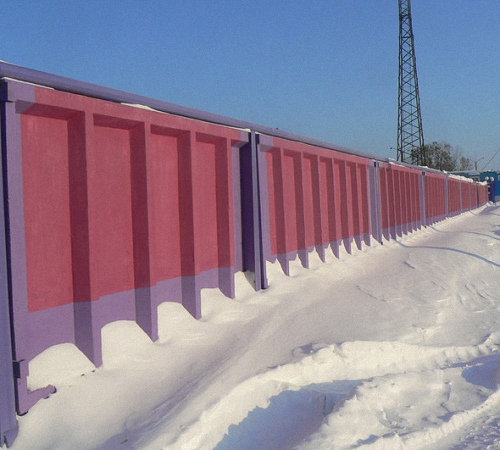
3. Acrylic paint for concrete - has excellent resistance to abrasion. In addition, such paints have good elasticity, they are harmless to health and environmentally friendly. Acrylic-based paints cover the surface well, are economical in consumption, resistant to moisture, but at the same time vapor-permeable.
The only downside to using acrylics is that they are quite expensive compared to other alternatives. For acrylic paint for concrete for outdoor use, the price is very high if 100% acrylic binder predominates in its composition.
4. Wear-resistant latex paints for concrete are a kind of acrylic paints, however, their composition is dominated by the presence of a less expensive latex dispersion. Such components are compositions in the form of PVA glue, copolymers or acrylic.
The cost of this kind of paint is cheaper than that of acrylic, but the properties are almost the same. The only drawback of latex paints is their shorter service life than acrylic paints. After a certain time, burnout, peeling and contamination of the surface occur.
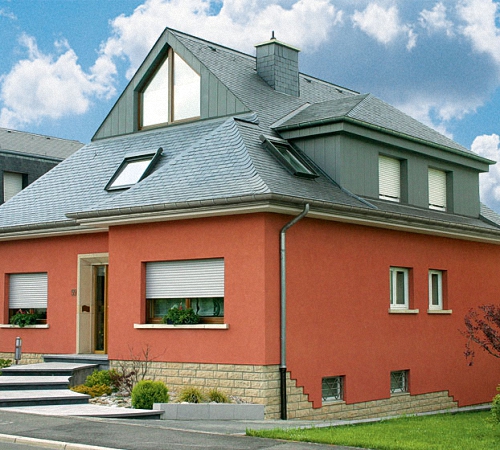
5. Water emulsion - they are distinguished by ease of application, low consumption, a variety of colors. This type of paint is quite popular due to its attractive cost. The disadvantages of this kind of paints include:
- low level of resistance to moisture;
- instability before mechanical damage;
- ease of abrasion;
- lack of protective properties;
- instability to chemical compositions and temperature differences.

Rubber paint for concrete - characteristics and description
Rubber paint is classified as a universal composition, as it is suitable for painting not only concrete surfaces, but also for wood, metal, slate, roofing, tennis courts, etc.
Paint of this kind is called rubber because of its high level of elasticity. This material has a short history and has not yet received due demand in the modern market of paints and varnishes.
Rubber paint differs from other types of paints in that it has a flexible film of polymers, which is formed after the paint composition has completely dried. If the temperature in the environment rises, then it is stretched, otherwise it is compressed. Thus, cracks and chips, which are typical for an oil coating, do not form on the surface.
For the manufacture of rubber paint, a water-dispersion mixture is used, which includes an acrylate polymer. In addition, the paint does not contain organic solvents and other environmentally harmful substances.

Another component of rubber paint is a color pigment, thanks to which it acquires one or another shade. After applying the paint to the concrete base, it becomes matte. The coating does not have a shine, but becomes quite pleasant to the touch.
Among the advantages of rubber paint for concrete should be highlighted:
- high elasticity, resistance to cracking and deformation;
- good level of adhesion, due to which the paint does not peel off and does not peel off;
- resistant to temperature changes, so it is safely used for outdoor work;
- resistant to ultraviolet radiation;
- is a kind of waterproofing material;
- vapor permeable;
- environmentally safe, harmless to human health;
- convenient to apply.
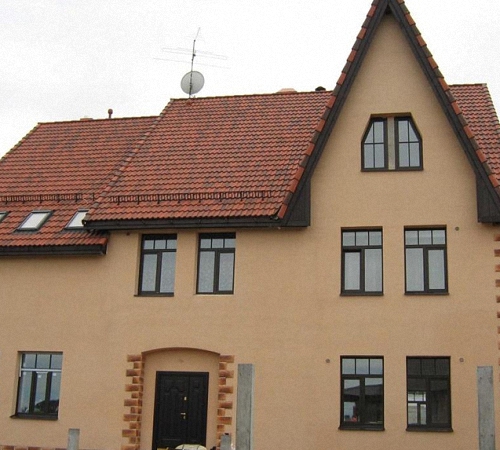
The interval for using paint is from -55 to +60 degrees. This type of paint covers basement surfaces, blind areas, walls, garden paths, gazebos or fences.
Among the disadvantages of rubber paint, the correct technology of its application should be noted. If the paint is applied in a thick layer, then it will not fulfill all the functions assigned to it, so the material is applied in two or three very thin layers.
Facade paints for concrete for outdoor use: features of choice
Please note that when choosing paint for concrete, its cost will not be a decisive factor, since, first of all, you need to pay attention to the quality of the material. There are two paint options for concrete:
- formulations that provide a smooth texture;
- texture blends.
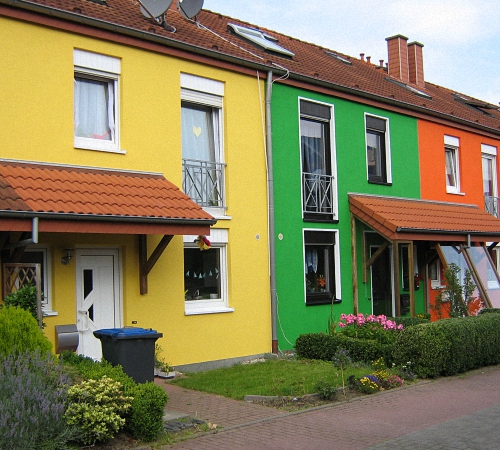
The second option is characterized by good hiding of defects and cracks on the surface and a denser structure.
To characterize the decorative side of concrete paints, two concepts are used in the form:
- tinting, which allows you to achieve the desired shade by mixing several colors of paint;
- reflective characteristics - they allow the paint to reflect light radiation, depending on this criterion, the paints are glossy, matte, semi-matte.
If you plan to paint a concrete facade, then it is better to give preference to a paint with a matte effect. Since they have a higher vapor permeability, which is especially important for the walls of the building. In order to decorate certain fragments of the surface, molumate type paints with a slight sheen are used.
Since the concrete surface is a material that does not readily absorb other mixtures, the paint must have good covering characteristics. It is preferable to apply it in several layers to completely hide the texture of the plaster.
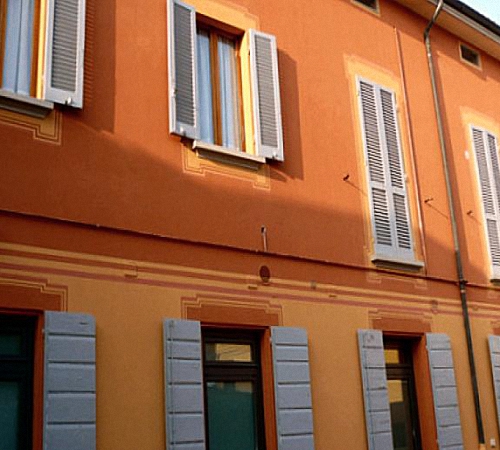
Please note that paint adheres better to a cement base than to a concrete surface.
In relation to the type of film former, paints for concrete are acrylic, water-based, acrylate, silicone, latex, etc.
Concrete surfaces that are subject to high mechanical stress should be coated with special epoxy paints. A special category includes coatings with high resistance to mechanical damage.
If you plan to finish the facade, it is better to give preference to acrylic or silicone paint. It is possible to use silosane paints or acrylic compositions.
Most paints have good vapor permeability, thus improving and maintaining a healthy indoor atmosphere. But, keep in mind that the material from which the walls are made must also have vapor permeability.
Consumption of paint on concrete depends on its density and consistency, this value must be indicated by the manufacturer in the technical specifications of the composition. In order to buy paint for concrete, it is better to contact a specialized store, where experienced specialists will help you choose the composition in accordance with the individual characteristics of the surface to be painted.
Before applying paint, it is necessary to carry out preparatory work to clean the surface from dirt and dust. In addition, to improve the adhesion of the paint to the surface to be painted, it is recommended to pre-treat the concrete base with a primer.
To make your own primer, it is enough to dilute one part of the paint with ten parts of an organic or water-based thinner. After the applied composition has dried, the surface should be painted. In the process of work, it is better to use a brush, roller or spray gun. Brushes with natural bristles should not be used, as under the influence of paint they begin to swell and leave marks on the surface.
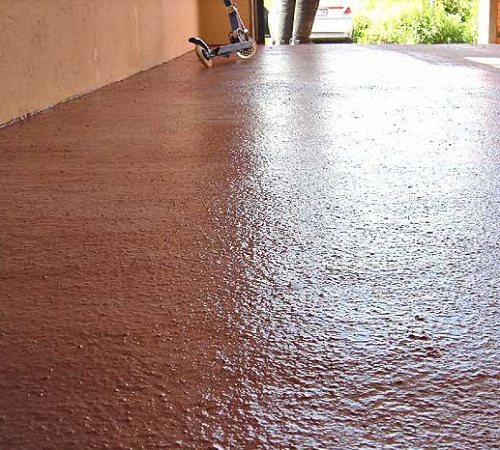
Painting the basement has its own nuances, and in particular, it is not recommended to use paints that do not indicate in the instructions that they are suitable for painting the base. The composition for the basement should be of better quality, since this part of the building is too exposed to aggressive environments, harmful microorganisms, etc.




